Spring has sprung and trees throughout the southwest are leafing out to get a jump on the growing season. As tiny bright green leaflets emerge across the landscape, so do tiny bugs that use them as a food source. At first glance you may think these are tamarisk leaf beetles, but look a little closer…
While the majority of these may indeed be leaf beetles, a group of insects which includes the Diorhabda spp. (tamarisk leaf beetles), there are many other leaf beetles you may encounter this time of year.
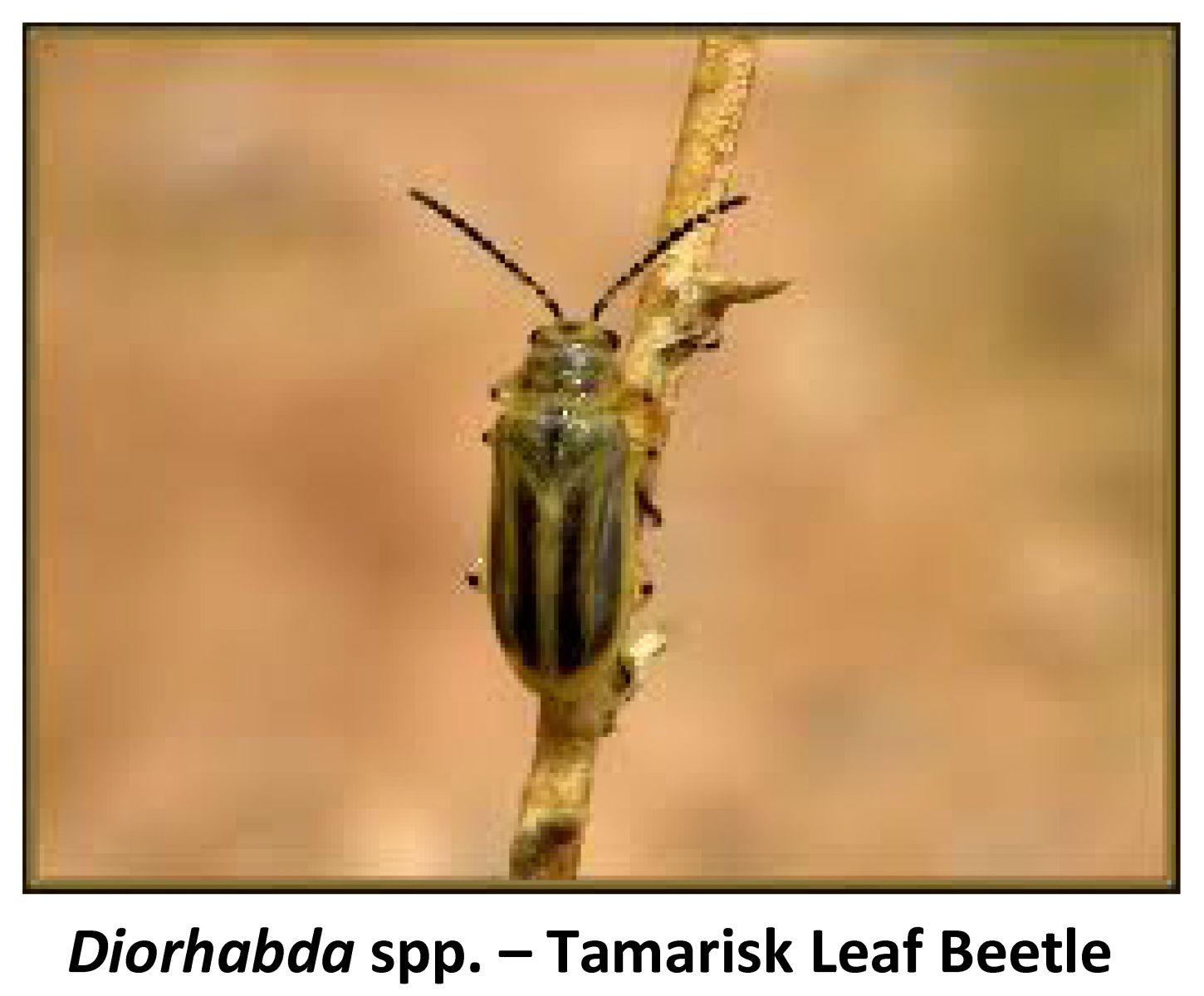 The Chrysomelidae family of insects, known more commonly as leaf beetles, is one of the largest beetle groups and includes over 35,000 species. The beetles in this family are all “phytophagous” or plant feeding, with the adults feeding on live plant material and, as determined by the species of beetle, the larvae feeding on leaves, stems, or even underground roots. Depending upon the numbers of beetles within a local population, this feeding can have a severe impact on the health of the host plant, with heavy feeding often leading to plant death.
The Chrysomelidae family of insects, known more commonly as leaf beetles, is one of the largest beetle groups and includes over 35,000 species. The beetles in this family are all “phytophagous” or plant feeding, with the adults feeding on live plant material and, as determined by the species of beetle, the larvae feeding on leaves, stems, or even underground roots. Depending upon the numbers of beetles within a local population, this feeding can have a severe impact on the health of the host plant, with heavy feeding often leading to plant death.
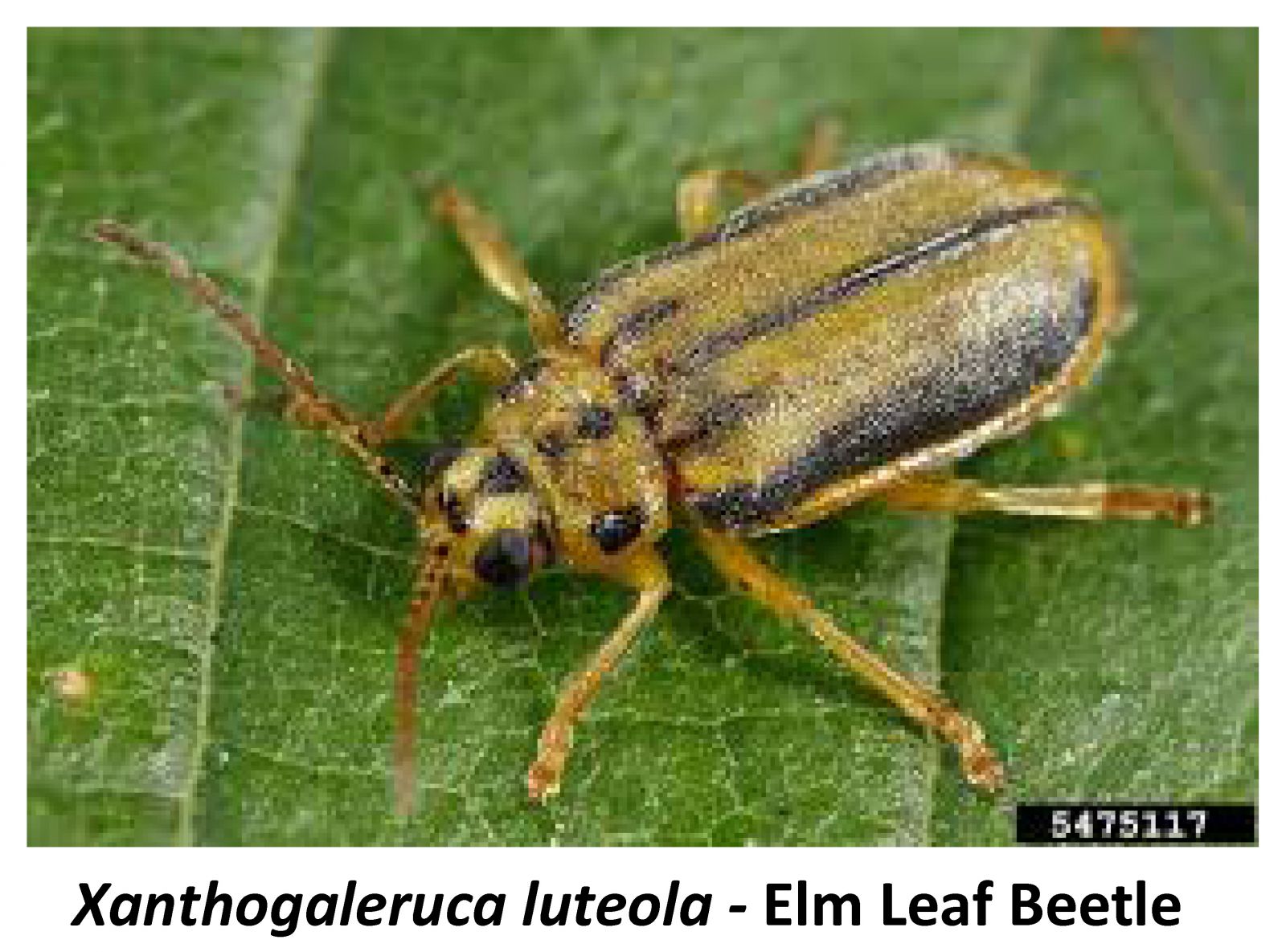 Leaf beetles are mostly univoltine, laying eggs just once in a single season or year, with larvae having several caterpillar-like stages, called instars, before maturing into adult beetles. The beetles over-winter as adults in a manner similar to hibernation, known as diapause. This may occur in the soil, in the leaf litter, or as often is the case with elm leaf beetles (Xanthogaleruca luteola), in peoples’ homes. When spring arrives and fresh new growth appears on the trees the beetles emerge from diapause to feed on the soft leaves. Many leaf beetles are very specific when it comes to diet and will only eat plants in the same family or genus. Thereby, the association of particular leaf beetles and their common names with particular plants.
Leaf beetles are mostly univoltine, laying eggs just once in a single season or year, with larvae having several caterpillar-like stages, called instars, before maturing into adult beetles. The beetles over-winter as adults in a manner similar to hibernation, known as diapause. This may occur in the soil, in the leaf litter, or as often is the case with elm leaf beetles (Xanthogaleruca luteola), in peoples’ homes. When spring arrives and fresh new growth appears on the trees the beetles emerge from diapause to feed on the soft leaves. Many leaf beetles are very specific when it comes to diet and will only eat plants in the same family or genus. Thereby, the association of particular leaf beetles and their common names with particular plants.
Leaf beetles are generally less than ¼” in length, shaped a bit like elongated lady beetles, and are often ornately marked and colored. For a broad overview of leaf beetle images, check out this page: http://www.texasento.net/TXChryso.html
Each leaf beetle species has its own specific coloration and markings, which are often similar to other species. For those of you looking for tamarisk leaf beetles to emerge (it will probably be early to mid-May before they come out of diapause), pay attention to the very similar elm leaf beetle (colors are somewhat reversed), or if you are in an area with viburnum, the viburnum leaf beetle (Pyrrhalta viburni), or scattered Trirhabda spp. (often found on asters). And for those of you who are working in riparian areas right now and have had little yellowish beetles landing on your shoulders, catch one and notice the beautiful dash and dot pattern of the cottonwood leaf beetle (Chrysomela scripta). These little beetles were everywhere at a site here in Grand Junction a week ago.
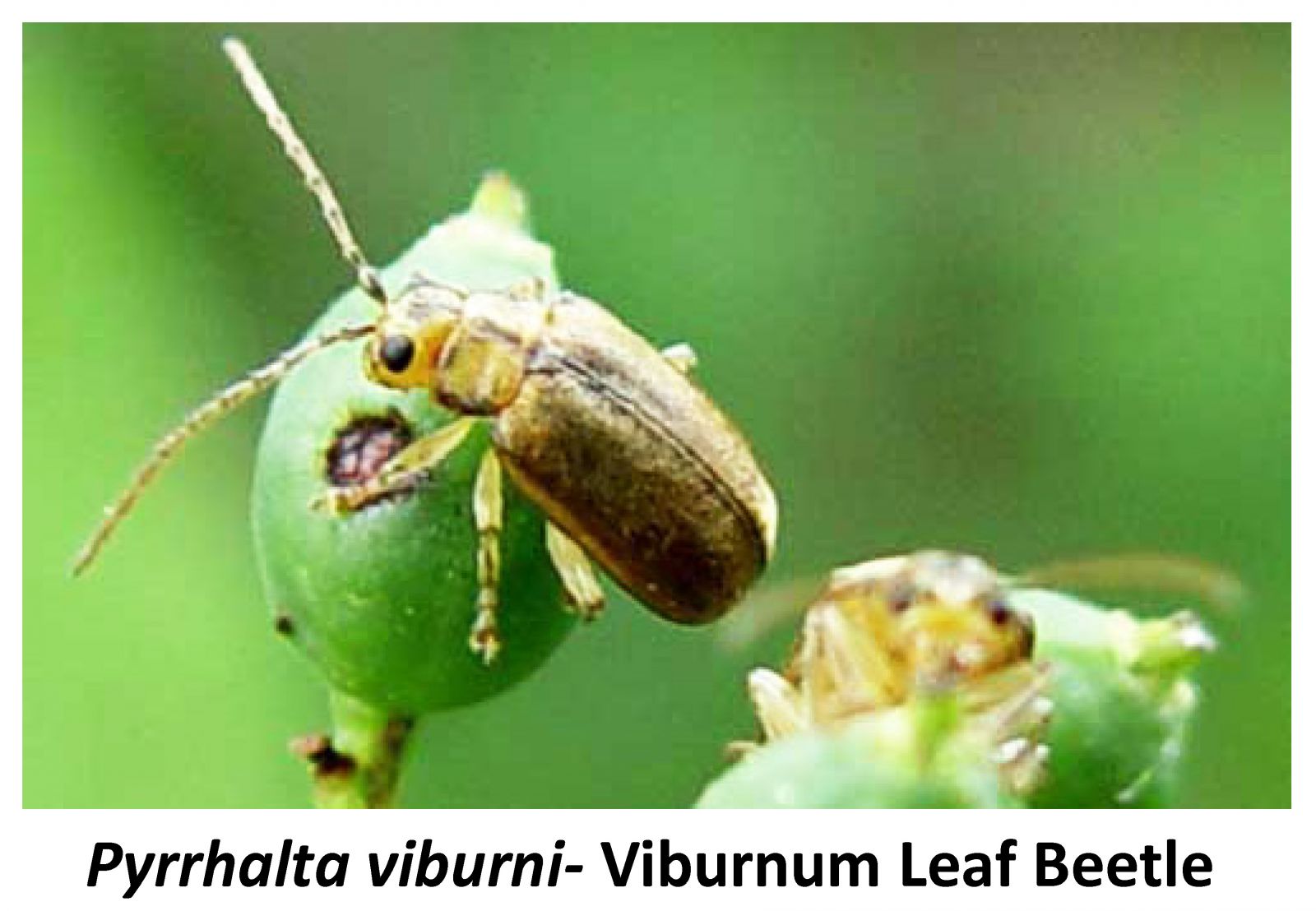
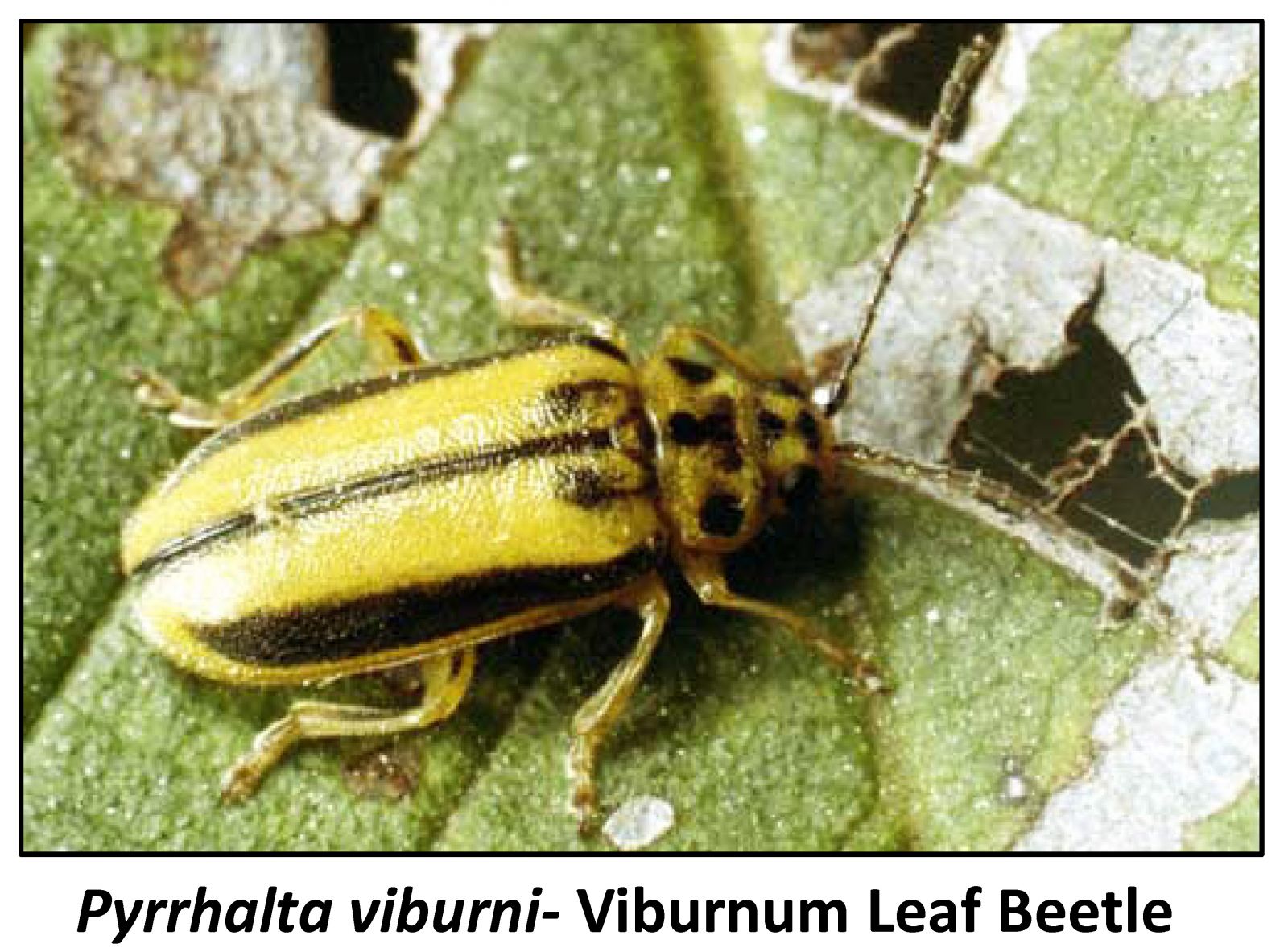
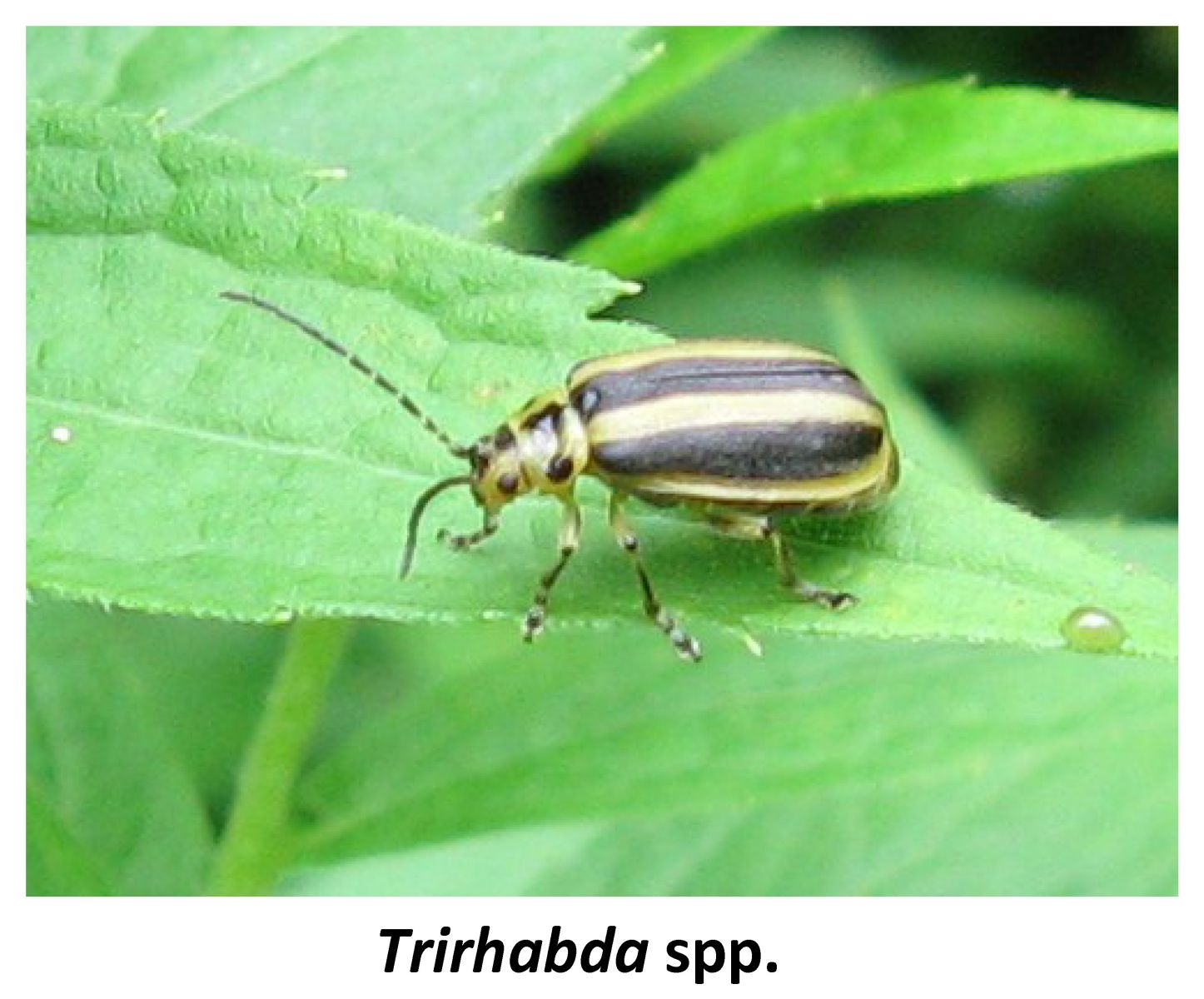
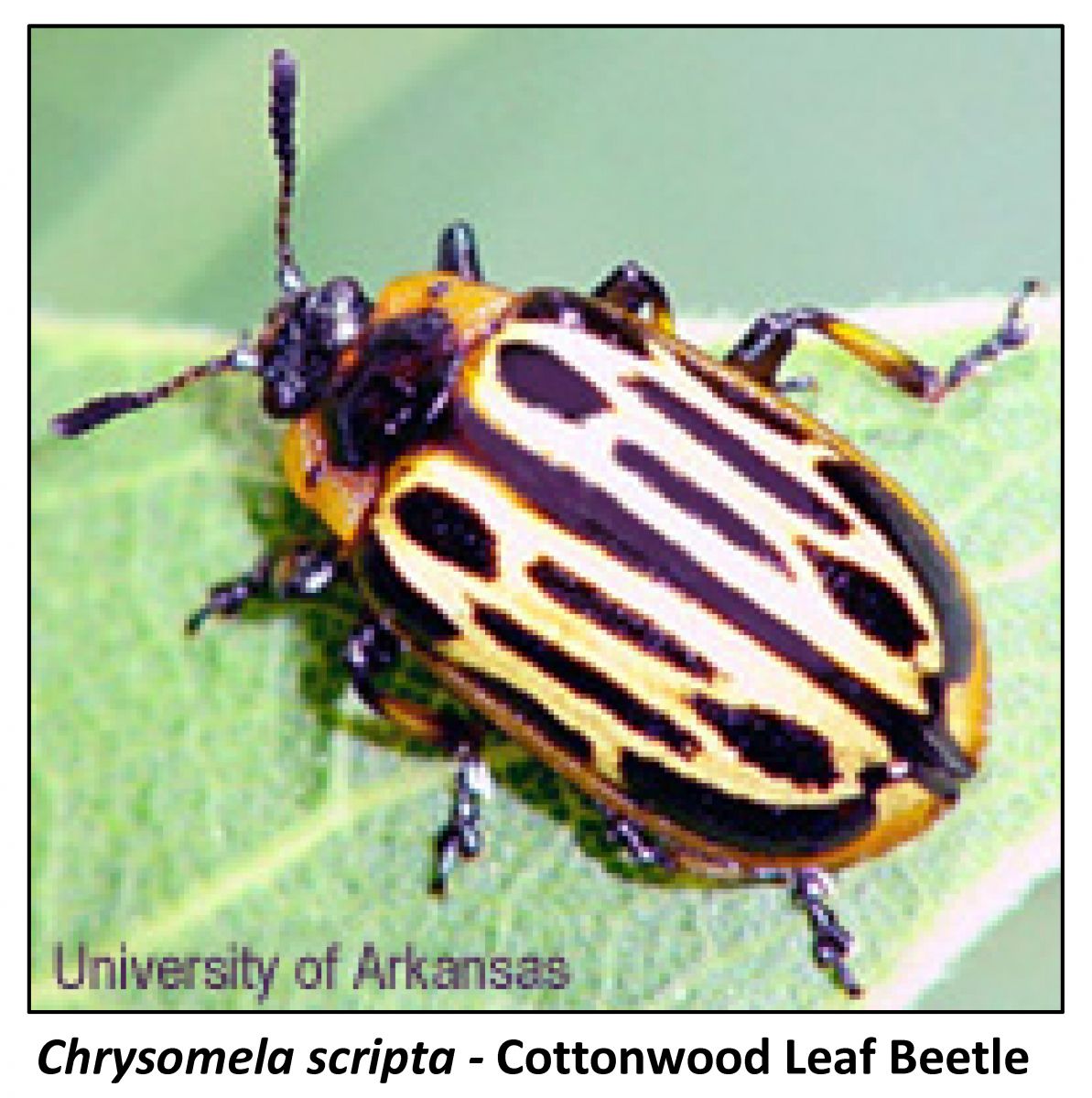
All leaf beetles can cause damage to individual trees and possibly large stands of trees if the beetles are in high enough numbers. Pest species like the introduced elm and viburnum leaf beetles (both from Europe) may be easily controlled with pesticide, consult your local extension service as to the best (approved) method for your area. The native cottonwood leaf beetles can have heavy impacts to cottonwood and willow stands by defoliating the trees, but are typically only severely detrimental in cottonwood plantations where the host species are in such large numbers as to allow for very high beetle populations to develop.
.jpg)
Dense tamarisk stands, combined with the multivoltine (many broods in a season) characteristic of the tamarisk leaf beetle, may lead to mind-boggling 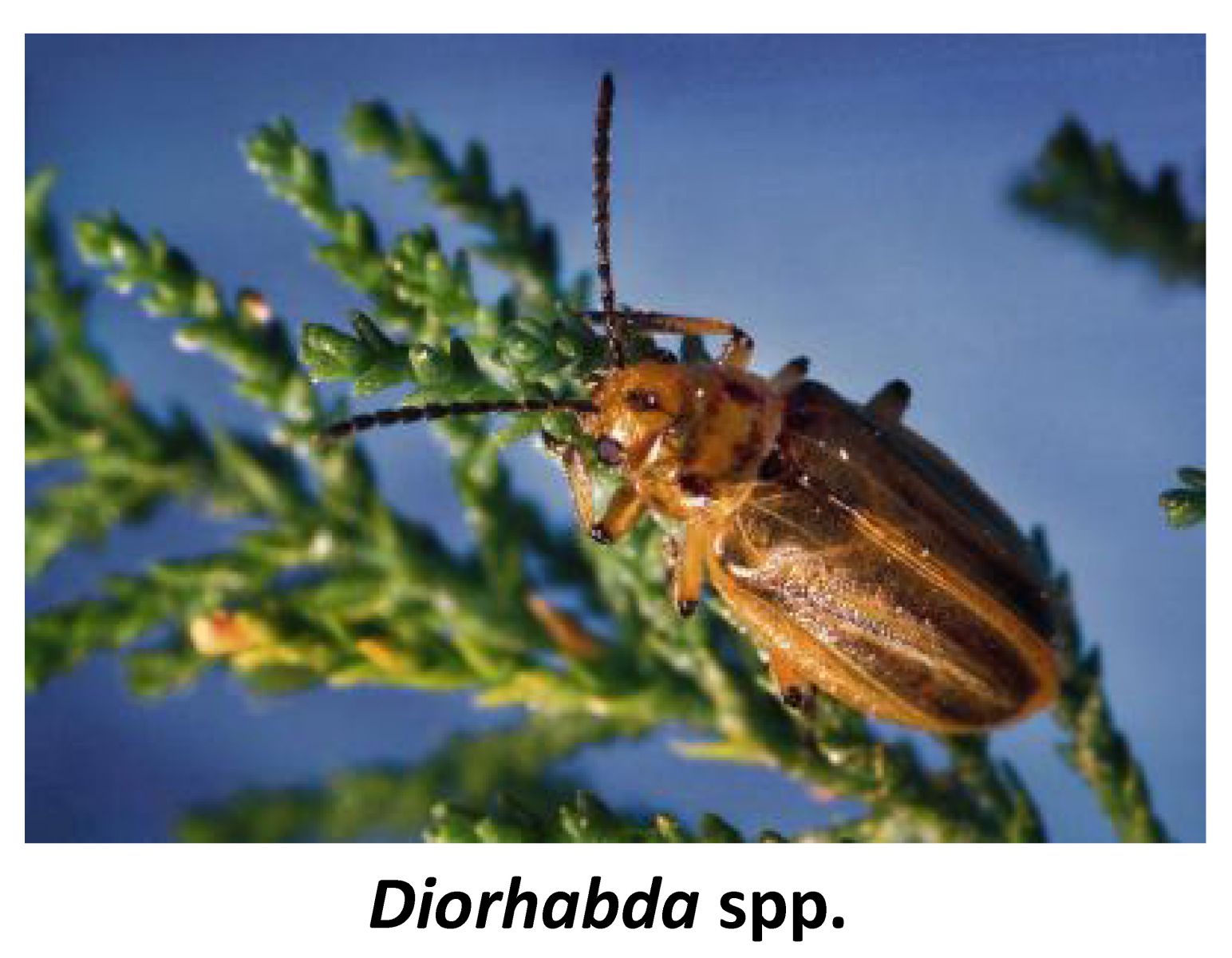 numbers of Diorhabda beetles and heavy defoliation and “brown out” of tamarisk along rivers. Tamarisk beetles have a five to six week life cycle and, depending upon latitude, may have up to five generations in a single year. This has facilitated rapid expansion of beetle populations across the southwest and greatly expanded our network of partners tracking this spread. If you see beetles that you think may be tamarisk leaf beetles, take a closer look, and if you do indeed have the tamarisk beetle in your area, please shoot me an email (bbloodworth@tamariskcoalition.org) and let me know!
numbers of Diorhabda beetles and heavy defoliation and “brown out” of tamarisk along rivers. Tamarisk beetles have a five to six week life cycle and, depending upon latitude, may have up to five generations in a single year. This has facilitated rapid expansion of beetle populations across the southwest and greatly expanded our network of partners tracking this spread. If you see beetles that you think may be tamarisk leaf beetles, take a closer look, and if you do indeed have the tamarisk beetle in your area, please shoot me an email (bbloodworth@tamariskcoalition.org) and let me know!
Happy leaf beetle hunting!
More Leaf Beetle pics:
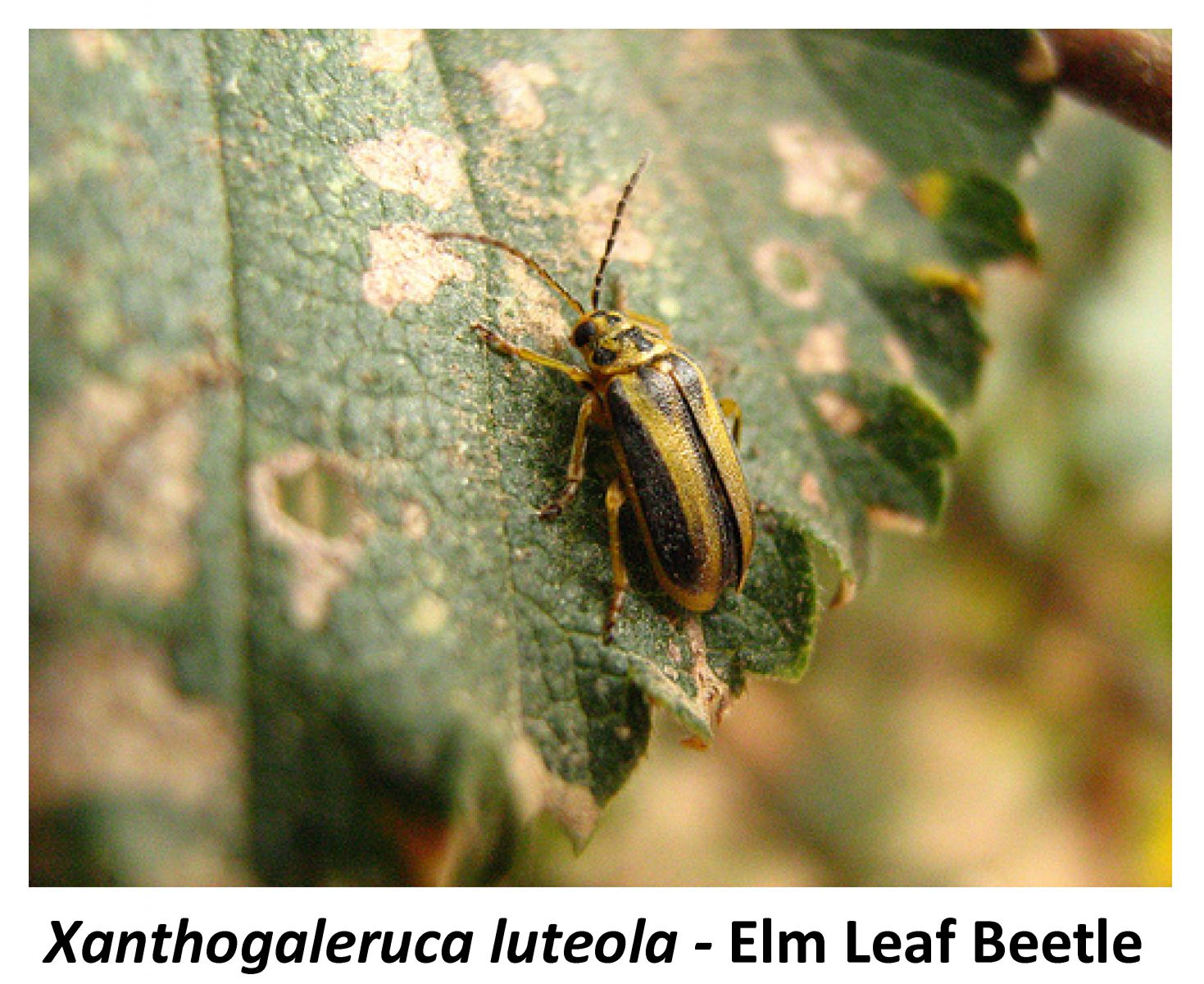
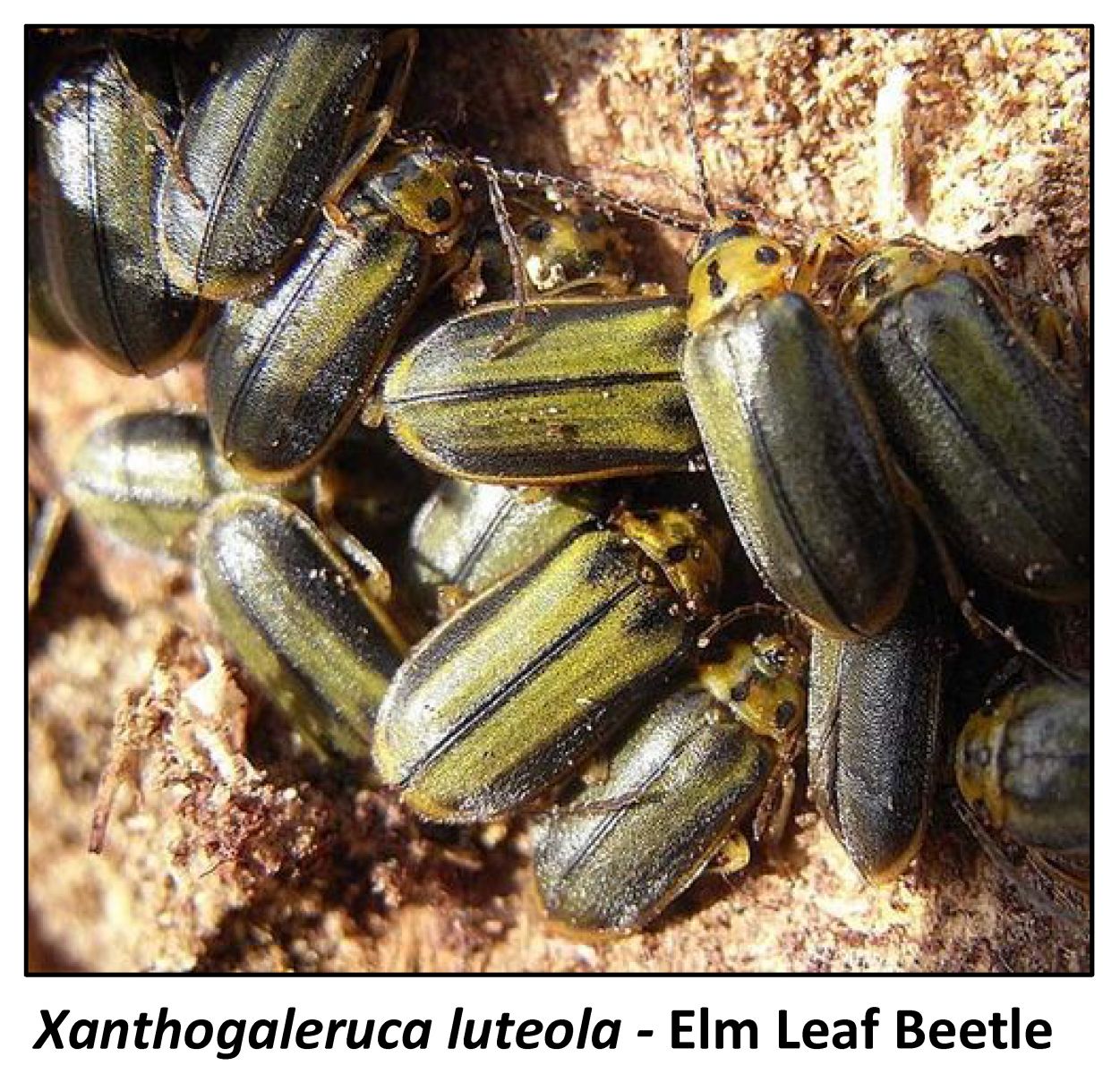
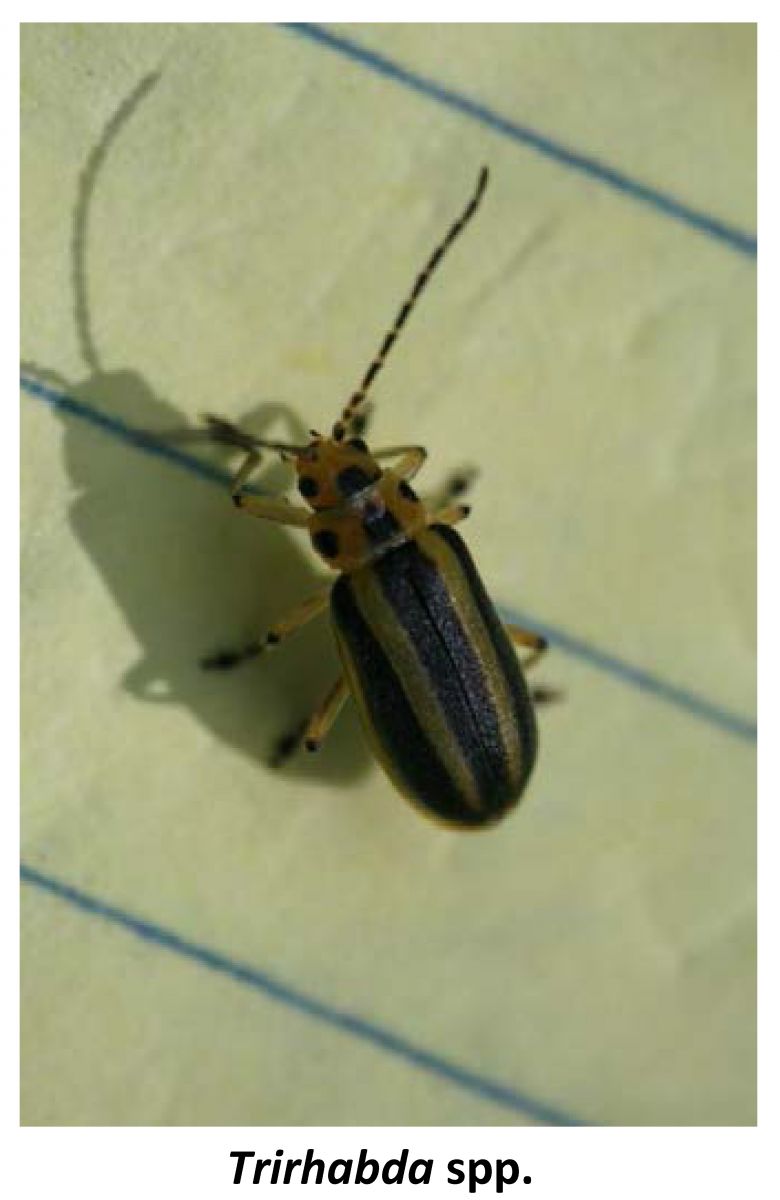
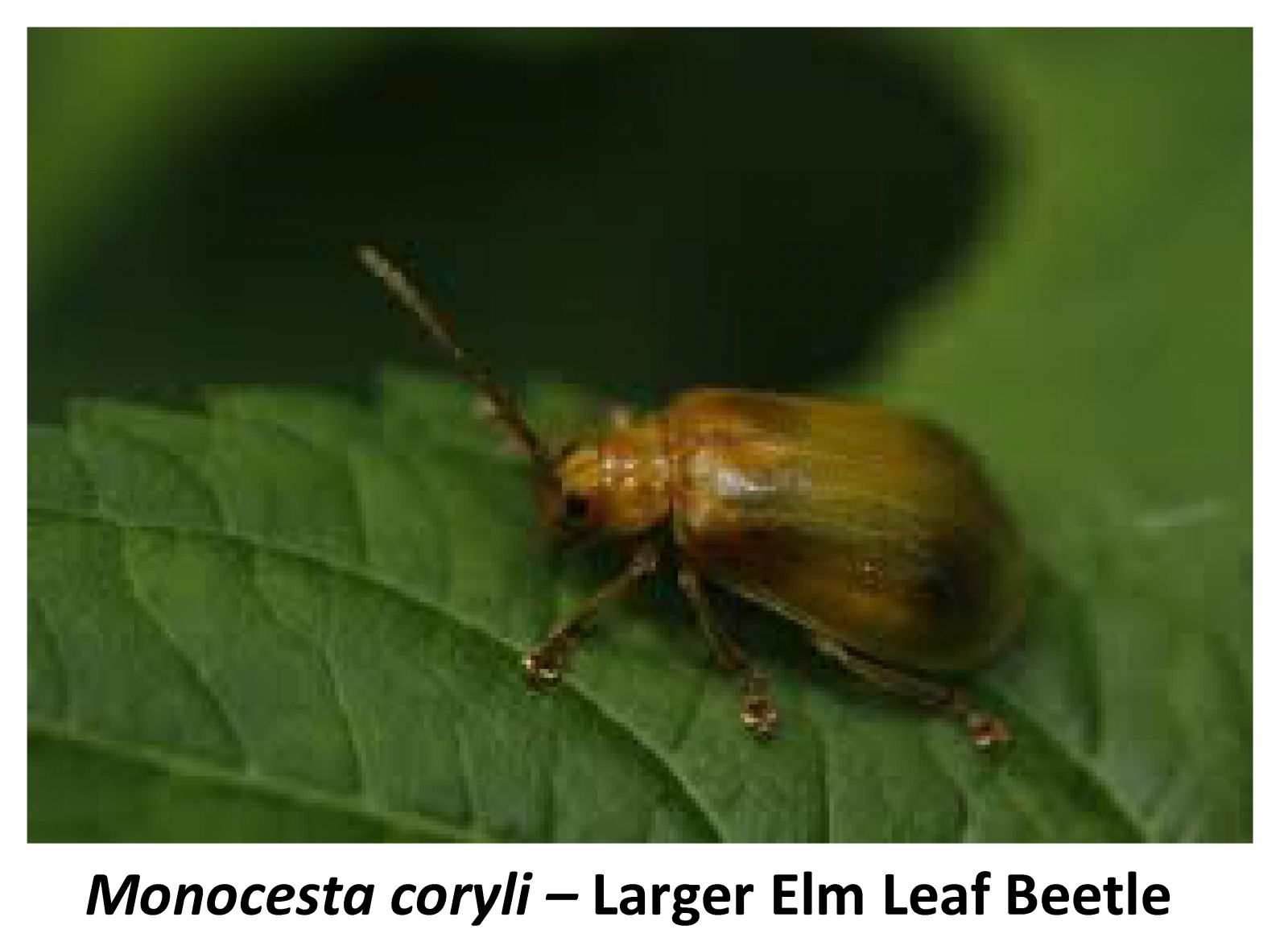
Further reading and resources for this posting:
http://www.tamariskcoalition.org/programs/tamarisk-beetle
https://bugguide.net/node/view/180
https://extension.usu.edu/pests/
https://insects.tamu.edu/fieldguide/bimg186.html
http://www.ext.colostate.edu/pubs/insect/05521.html
http://entnemdept.ufl.edu/creatures/orn/beetles/viburnum_leaf_beetle.htm

